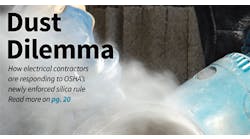One rule of working safely is this: don't assume. Make sure you know. See if you can identify the steps required to verify the facts rather than trust the following assumptions:
- Your insulating gloves don't have holes.
- The switchgear you've tagged out is actually isolated.
- Your test leads are safe to use.
- Your DMM is set correctly for the measurement you're taking.
- You can safely enter the vessel that your coworkers just exited.
- You can safely stay in the vessel based on data taken when you entered.
- The person you've asked to be your attendant is qualified, has the correct PPE, has reliable communication with first responders, and is capable of safely performing an extraction.
- The new batch of the epoxy you've been using has the same ventilation and PPE requirements as the previous batch. Are you sure this one isn't a new formulation that perhaps dries faster but also is more toxic?


